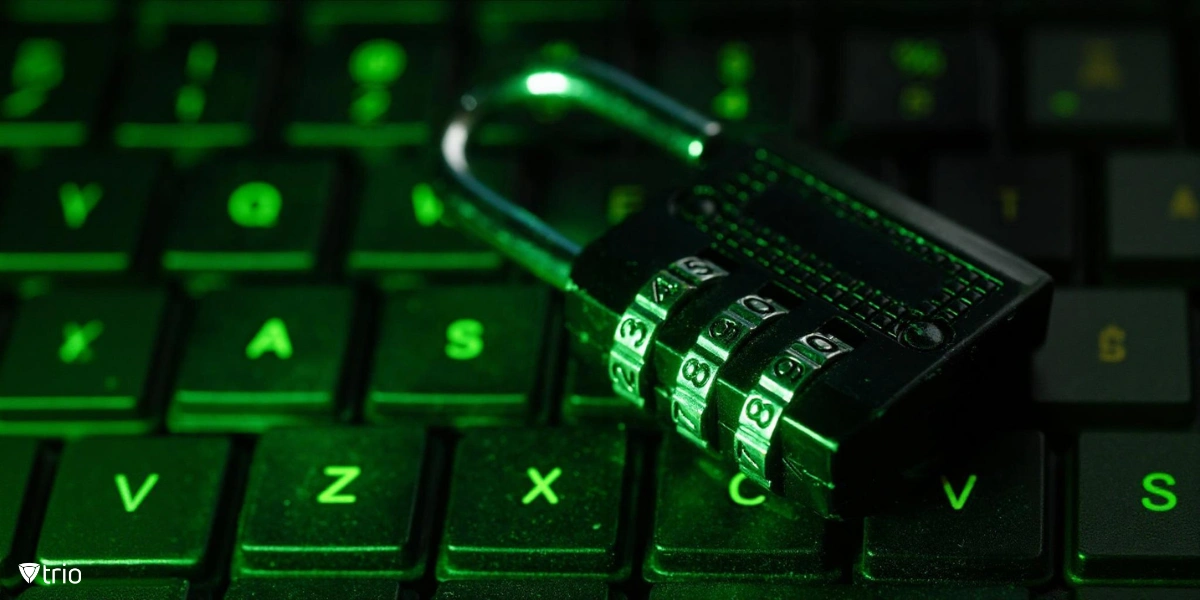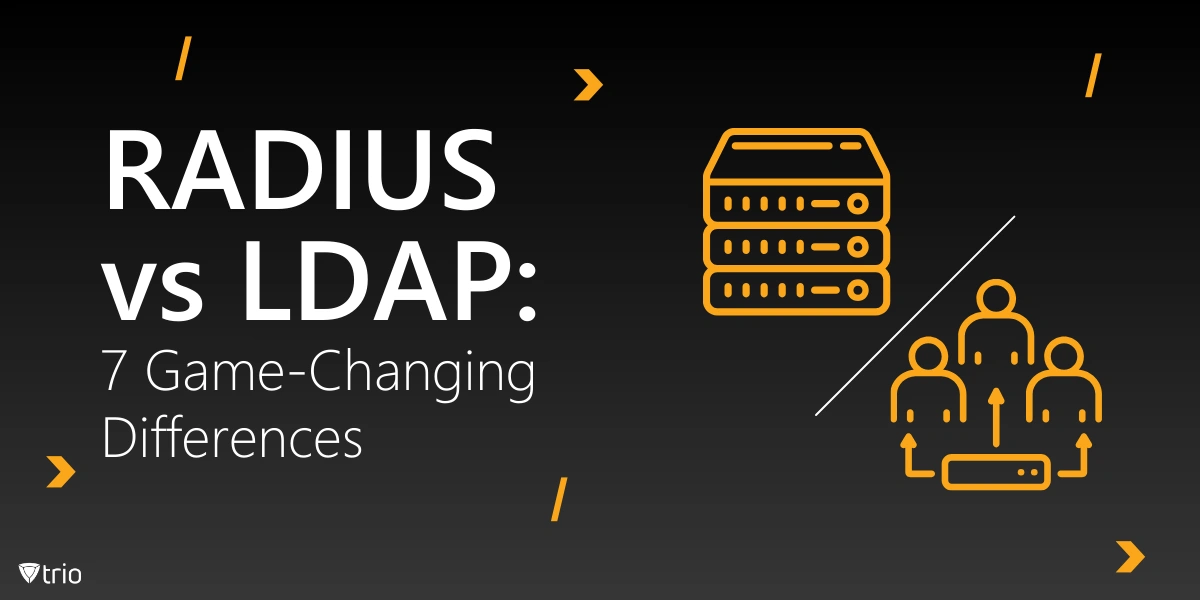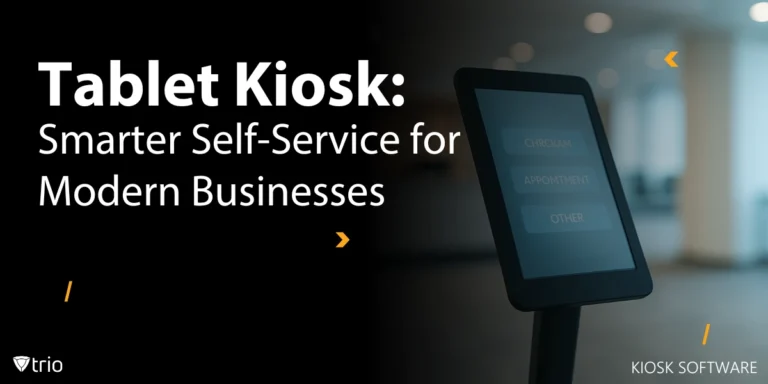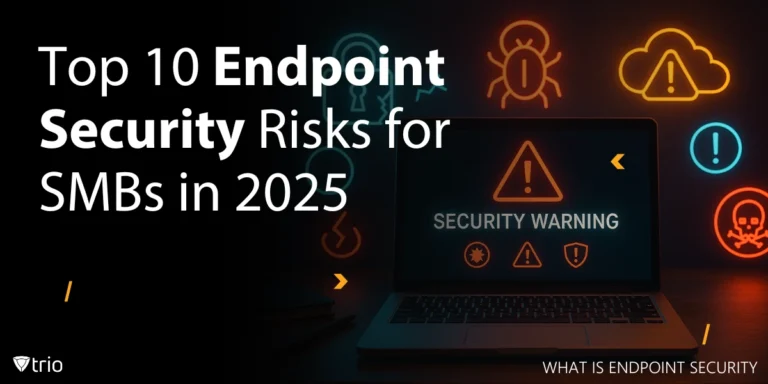Secure authentication methods are the backbone of modern server management, enabling organizations to safeguard networks and control access effectively. However, not all protocols fit every environment, as each caters to distinct needs. As networks grow in complexity, the tools that protect them must also adapt to keep pace with evolving requirements.
RADIUS, designed for remote access, and LDAP, built for directory-based queries, dominate the authentication landscape by offering robust frameworks for managing user identities. Whether configuring VPNs or managing organizational hierarchies, these protocols set the foundation for secure and efficient access control. Yet, deployments may fall short of their potential without a clear understanding of their differences.
This post unpacks key differences in the RADIUS vs. LDAP authentication debate, providing actionable insights into architecture, scalability, and configuration. By the end, you’ll gain the clarity needed to determine which protocol fits your infrastructure or whether blending both unlocks untapped opportunities for secure authentication.
What Is RADIUS?
RADIUS (Remote Authentication Dial-In User Service) emerged in the 1990s when dial-up internet dominated connectivity. Originally designed to manage remote access, it quickly became a standard for Authentication, Authorization, and Accounting (AAA)—a framework that remains fundamental to secure network access and usage monitoring across enterprises, supporting evolving technologies and workflows.
In practice, RADIUS acts as the gatekeeper for remote connections, validating credentials through a centralized RADIUS server before granting permissions. Its centralized approach simplifies Windows server user management by enforcing consistent policies across devices, reducing manual overhead, and ensuring compliance with security standards, even in highly distributed setups.
Key strengths of RADIUS include centralized control, detailed reporting, and granular accounting logs—features that streamline auditing processes and meet compliance requirements. However, setting up RADIUS often involves navigating complex radius.conf files and device-specific configurations. In large-scale environments, misconfigured setups can lead to latency and performance issues.
Despite these challenges, RADIUS excels where tight oversight is non-negotiable. Its ability to enforce strict policies makes it indispensable for Wi-Fi authentication, VPNs, and enterprise-grade access control, offering reliability and scalability in securing remote connections.
What Is LDAP?
LDAP (Lightweight Directory Access Protocol) evolved from the X.500 standard, simplifying how organizations store and retrieve structured data. As directories ballooned with user credentials and organizational charts, LDAP stepped in as the go-to solution for identity management.
So how does LDAP work? Think of it as a database query tool designed for identity verification. It reads entries stored in hierarchies—organized like a family tree—allowing rapid lookups and modifications. Its lightweight framework ensures compatibility with most platforms, boosting its reputation for flexibility.
LDAP’s lightweight communication protocol enables fast searches, ideal for identity verification in web applications. However, when it comes to AAA functions, LDAP sometimes leans on companion protocols or custom layers, leaving gaps that need additional configuration. Scaling massive directories also demands careful planning to avoid structural bottlenecks.
Whether managing thousands of users, streamlining organizational structures, or integrating with Active Directory authentication systems, LDAP remains a powerhouse for identity-driven tasks. Its flexible directory services ensure smooth scalability and seamless data retrieval, making it ideal for identity management in enterprise environments that demand reliability, hierarchical organization, and fast query performance.
7 Game-Changing Differences
Authentication protocols shape how users interact with modern networks, but the differences between RADIUS and LDAP often spark debates. Understanding these differences is critical for making informed decisions about security, scalability, and performance. Below, we break down seven game-changing distinctions that highlight where each protocol excels—and where it doesn’t.
1. Architecture and Protocols
RADIUS enforces AAA principles through a client-server model, focusing on authentication, authorization, and accounting. It excels in enforcing policies defined at the server level and efficiently scales across multiple devices, making it ideal for managing access in remote and distributed environments where centralized control is a priority.
LDAP emphasizes querying and modifying structured directories, enabling identity management with a hierarchical design. Its framework prioritizes identity lookups and seamless authentication for directory-based databases. LDAP’s ability to store, organize, and retrieve user data in object-based formats makes it perfect for systems requiring robust organizational structure and fast access to identity information.
2. Primary Use Cases
RADIUS dominates network access scenarios by enforcing AAA controls for Wi-Fi logins, VPNs, and NAS devices. It ensures secure authentication and accounting, making it indispensable for remote access management. Its centralized structure simplifies configuration while providing scalable solutions for environments requiring strict oversight and compliance with security policies.
LDAP operates differently, acting as the backbone of identity stores by organizing and retrieving structured data. It integrates seamlessly with enterprise applications, enabling efficient user authentication across systems. Its hierarchical design prioritizes flexible identity management, making it ideal for maintaining large directories and handling structured queries in complex organizational frameworks.
3. Security Layers and Encryption
RADIUS comes pre-packed with encryption options, including EAP-based methods, which simplify securing authentication traffic. Its built-in mechanisms ensure data protection during transmission, making it a reliable choice for remote access scenarios requiring encrypted tunnels and enhanced security features against unauthorized access attempts. Its layered encryption boosts compliance with modern standards.
Meanwhile, LDAP relies heavily on TLS/SSL protocols to establish secure connections for protecting credentials during communication. Although it depends on external configurations for encryption, LDAP’s support for SSL enables flexibility for integrating with enterprise systems and cloud applications. Its encryption capabilities provide reliability but may demand additional setup steps to ensure proper implementation.

4. Scalability and Performance
RADIUS scales efficiently with its accounting features, offering reliable performance across diverse environments. Its ability to handle detailed logging and reporting makes it a preferred choice for setups requiring strict monitoring. However, ensuring scalability demands proper configuration and consistent updates to maintain performance during growth or network expansions.
LDAP excels at directory lookups, providing rapid access to vast datasets through its structured, hierarchical design. While it manages identity storage seamlessly, scaling requires thoughtful schema planning to prevent bottlenecks. Properly designed directories enable LDAP to maintain performance, even in larger organizations handling thousands of entries and complex authentication requests.
5. Configuration and Setup Complexity
RADIUS setup requires configuring radius.conf files, defining policies, and syncing devices with the server. Its setup demands attention to detail, as even minor misconfigurations can lead to connection failures. While robust, its configuration process often involves multiple layers of customization, making it ideal for experienced administrators managing secure networks.
LDAP, on the other hand, needs schema design expertise to craft hierarchies and manage object classes effectively. Its flexibility in organizing data ensures scalability, but building directory trees requires careful planning. Although LDAP’s visual tools simplify some tasks, administrators still need a deep understanding of schemas and attributes to ensure smooth integration.
6. Supported Authentication Mechanisms
RADIUS is versatile, supporting EAP variations like PEAP and EAP-TLS, enabling secure multi-factor authentication for remote access. It adapts well to modern security requirements, ensuring encrypted communication and compatibility with diverse devices. Its flexibility makes it ideal for enterprise setups prioritizing scalability and compliance.
LDAP prefers simpler methods like bind requests, using options such as simple or SASL for authentication. Paired with optional SSL, it secures data transmission effectively. Its structure focuses on directory-based identity management, making it suitable for hierarchical systems and organizations needing fast, reliable access to stored credentials and organizational data.
7. Integration With Existing Systems
RADIUS integrates tightly with routers, switches, and wireless controllers, making it a natural fit for managing network access and enforcing authentication policies. Its compatibility with hardware devices allows organizations to establish centralized control, ensuring seamless monitoring, user management, and compliance across distributed environments requiring scalable and reliable access solutions.
Regarding LDAP vs. Active Directory discussion, LDAP meshes smoothly with Active Directory, providing a robust foundation for enterprise identity stores and applications. Its hierarchical structure supports detailed data organization, enabling identity management across complex systems. LDAP's ability to handle queries efficiently ensures reliable integration with enterprise platforms, streamlining user authentication while supporting large-scale directory-based operations.
Together, these differences highlight why environments often mix protocols—using LDAP for identity storage and RADIUS for access control.
Practical Tips for Smooth Deployment
Carefully analyze existing workflows, devices, and network architectures before selecting authentication protocols. Evaluating whether centralized AAA services like RADIUS or structured identity hierarchies such as LDAP align with your infrastructure goals helps avoid costly missteps. Mapping dependencies and identifying compatibility gaps ensures smoother transitions and optimizes system performance.
Explore various tools, including FreeRADIUS servers and OpenLDAP directories, to find solutions that fit your needs. For hybrid scenarios, pairing LDAP’s structured storage with RADIUS’s AAA services strikes a balance between scalability and security. Testing trial versions before deployment reduces risks and ensures compatibility with existing systems and configurations. Successful RADIUS LDAP integration allows enterprises to combine identity storage with authentication control, delivering a unified approach to managing access and security policies.
Misconfigured policies, weak encryption, or overlooked access rules can create vulnerabilities. Implement TLS/SSL for LDAP to encrypt data and use strong shared secrets for RADIUS to prevent unauthorized access. Always test setups in staging environments to identify errors early and validate security configurations before moving to production.

The Future: Authentication at Warp Speed
Zero-trust models and adaptive access control are reshaping security paradigms by emphasizing continuous verification. Protocols like RADIUS and LDAP must evolve to integrate deeper with modern frameworks, ensuring seamless compatibility with hybrid networks and multi-cloud environments. Following server security best practices is essential for maintaining compliance and strengthening identity-based access management.
Cloud services leverage RADIUS and LDAP through integrations with SAML, OAuth, and identity federation tools, enabling flexible and scalable authentication. This approach supports remote access, simplifies identity management, and enhances interoperability between platforms, offering enterprises broader coverage and improved security without sacrificing ease of deployment.
Logging and automated threat detection tools complement AAA frameworks by enabling real-time monitoring and anomaly detection. As cyberattacks grow increasingly sophisticated, modern authentication protocols must incorporate machine learning and AI-driven defenses to preempt vulnerabilities and respond swiftly to unauthorized activities, minimizing security risks.
Trio: Simplify Authentication With MDM Integration
Tired of juggling multiple tools to manage user access? Trio simplifies authentication with MDM solutions that centralize policies, monitor devices, and integrate effortlessly with existing systems. Enjoy seamless workflows without sacrificing security. Ready to transform access control? Try Trio’s free demo today and experience smarter authentication management!
With Trio, combine RADIUS and LDAP integration into one powerful platform. Enhance scalability, streamline deployments, and reduce downtime with centralized controls. Whether securing remote networks or managing enterprise directories, Trio empowers businesses to stay ahead of modern security challenges while improving efficiency. Don’t miss out!
Conclusion: Picking the Perfect Protocol
RADIUS and LDAP handle authentication through distinct approaches—RADIUS excels at remote access control, while LDAP specializes in managing structured identity data. Each protocol shines in its own domain, but combining their strengths often creates hybrid deployments that deliver broader coverage and more robust security measures across diverse environments.
Modern networks require flexibility and scalability to adapt to evolving demands. Mixing these protocols allows organizations to leverage their complementary features, ensuring better performance and seamless integration. Staying updated, thoroughly testing configurations, and implementing server security best practices empower businesses to safeguard sensitive data while remaining agile in the face of technological changes.
Get Ahead of the Curve
Every organization today needs a solution to automate time-consuming tasks and strengthen security.
Without the right tools, manual processes drain resources and leave gaps in protection. Trio MDM is designed to solve this problem, automating key tasks, boosting security, and ensuring compliance with ease.
Don't let inefficiencies hold you back. Learn how Trio MDM can revolutionize your IT operations or request a free trial today!





